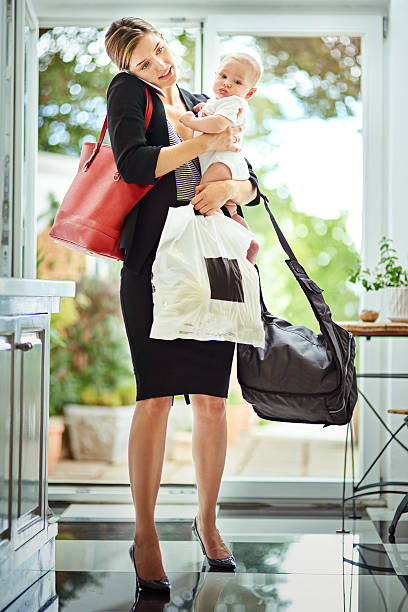Carrying the Weight Of Your Child On Your Back

It seems as though once children enter the picture, a parent’s arms are never empty again. We carry our children from the day that they’re born until we physically can’t lift them anymore. Although we’re happy to hold our children, carrying children can be painful. The best way to carry a child is a way that protects both child and parent. If the baby is comfortable, but your back is screaming in pain, it’s time to find a new way.
Is Your Back Susceptible When Carrying a Child?
Anytime we lift something, our back is susceptible to injury and pain. Along with the strain that comes from improper lifting, a baby or child may need to be lifted up to 50 times per day. As they get older, the number of times a child is lifted may be fewer, but the child weighs more, and the risk of injury or pain remains the same.
Certain situations and habits may make the risk of pain even higher. These include:
- Lifting a baby carrier – A baby carrier or an infant car seat may weigh up to 20 pounds before placing the baby inside.
- Stooping and hovering – Parents are often found bending over their infant in order to change their diapers or clothes, or soothe them to sleep. This constant hovering can cause significant back pain.
- Prolonged positioning – It may not hurt to pick up your baby and hold them in a particular position for a few minutes, but that same position may begin to hurt after long periods of time. It’s important to pay attention to posture anytime you’re holding or lifting your child.
What is the Best Way to Carry a Child to Protect Your Back?
To protect your back while holding or carrying a child, there are a few things to keep in mind:
- Lift with the legs – So many times, we bend at the waist in order to lift our child. This puts unnecessary strain on the spine. Instead, bend your knees and lift with your legs instead of relying on the back.
- Watch your posture – Good posture can improve your health in multiple ways. When it comes to lifting, keeping your shoulders down and chest back can protect the integrity of your back. You should also pull the baby close to your chest before standing fully, and avoid twisting to further protect your upper body.
- Focus on your feet – When lifting a child, your feet should be placed hip width apart. This balances and braces the body for lifting.
What Kind of Alternative is There to Carrying a Child?
Besides learning techniques to carry your child without back pain, there are other alternatives to help alleviate the pain. Some options for carrying, holding, and moving your child might include:
- Wrap – Baby wraps hold the weight of your baby around your body. These can be placed on the front of the body, or on the back, and provide multiple positions for your baby to be placed and be comfortable.
- Stroller – If your baby is big enough, consider moving your baby in a stroller. This won’t help specifically with lifting, but it may provide relief over long periods of time.
- Hip seat – If you need help with the weight of your child, consider using a hip seat. This is a device that wraps around your waist, and allows you to prop up your baby while you hold their upper body.
Are There Exercises That Can Help Us Carry a Child More Safely?
Exercise is always a good idea, and this is also true when it comes to protecting the back. Certain exercises can help strengthen the back and core and maintain flexibility in order to reduce your risk of injury and pain. Some exercises that you may consider adding to your routine include:
- Stretching or yoga
- Light weightlifting
- Core work
If all else fails, make sure to maintain an exercise routine that is enjoyable. Any exercise is more beneficial than living a sedentary lifestyle and will make holding your baby more enjoyable.
When Should We Stop Carrying a Child?
Some parents may wonder when they should stop lifting their child. The good news is that there isn’t a magic number. Every child will be different. Some kids may become too heavy at 4 years of age, while others may still be lifted at 6 years of age, a good rule of thumb is that children should stop being lifted when it’s right for the parent and child.
